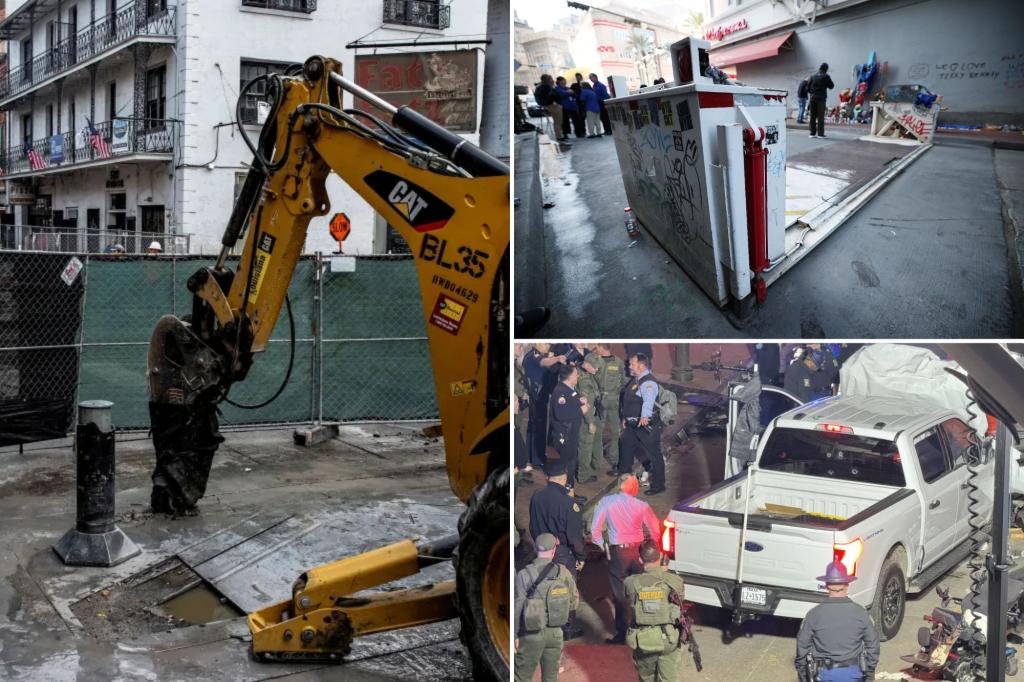The city of New Orleans has come under scrutiny for its security measures on Bourbon Street following a deadly vehicle attack on New Year’s Day 2025. Months prior, the city had conducted simulations modeling potential vehicle attacks, specifically focusing on the vulnerability of various intersections to a crew-cab Ford F-150, a vehicle similar to the one used in the attack that killed 14 and injured dozens. These simulations revealed that a pickup truck could enter the bustling tourist strip at speeds ranging from 12 to a staggering 70 mph. Ironically, despite these findings, the city opted to install new bollards rated to withstand impacts of only 10 mph.
The decision to prioritize ease of operation over impact resistance stems from the city’s previous struggles with a more robust bollard system. Unlike areas like Times Square in New York City, Bourbon Street accommodates regular vehicle traffic for a significant portion of the day, necessitating the daily placement and removal of street barriers. The prior system, designed for higher impact resistance, proved impractical due to its cumbersome operation and susceptibility to malfunctions caused by the accumulation of debris and the unsanitary conditions prevalent on Bourbon Street. City officials, grappling with the constant need to open and close the street, found the older system too difficult for staff to manage effectively.
The tragic New Year’s Day attack underscored the limitations of the city’s security planning. The assailant, Shamsud-Din Jabbar, a US combat veteran with alleged ties to the Islamic State, exploited a vulnerability not accounted for in the city’s simulations. While the entrance to Bourbon Street at Canal Street was blocked by a police cruiser, Jabbar navigated his seven-foot-wide pickup truck onto the eight-foot-wide sidewalk, bypassing the blockade and accelerating into the crowd. The city’s modeling, which only considered roadway entry points, failed to anticipate this possibility. Furthermore, neither the old nor the new bollard systems would have prevented the attack due to its unconventional nature.
The city’s choice of the new bollard system, manufactured by 1-800-Bollards Inc. and rated for 10 mph impacts, reflects a difficult balancing act between security and practicality. While acknowledging the system’s limitations against high-speed attacks, officials emphasized the need for a system that could be easily managed by city staff on a daily basis. The lighter weight of the new bollards, a key factor in their selection, allows for single-person operation, unlike heavier, higher-rated bollards that would require specialized equipment. This decision underscores the complex challenges cities face in safeguarding public spaces while maintaining accessibility and accommodating the flow of pedestrian and vehicular traffic.
The April 2024 engineering analysis commissioned by the city sheds further light on the decision-making process. The report evaluated various bollard systems based on different crash-rating standards, ultimately concluding that systems capable of withstanding higher-speed impacts were incompatible with the city’s operational requirements. The chosen system, while offering a lower level of protection, earned higher marks for ease of use, maintenance, and cost-effectiveness. The analysis also included the attack scenarios, some of which demonstrated potential vehicle speeds exceeding the 10 mph rating of the selected bollards even when entering from side streets.
Ultimately, the New Orleans bollard situation exposes a difficult trade-off. While the city acknowledges the limitations of the chosen system, particularly against determined, high-speed attacks, it argues that the ease of operation and daily practicality outweigh the potential risks. The chosen system, while not a foolproof solution, offers some level of protection against lower-speed, accidental incursions or less determined attacks, while also allowing the city to maintain the necessary balance of security and accessibility on Bourbon Street. The fact remains, however, that the system remains vulnerable to determined high-speed attacks, highlighting the persistent challenges in securing public spaces in an era of evolving threats.

